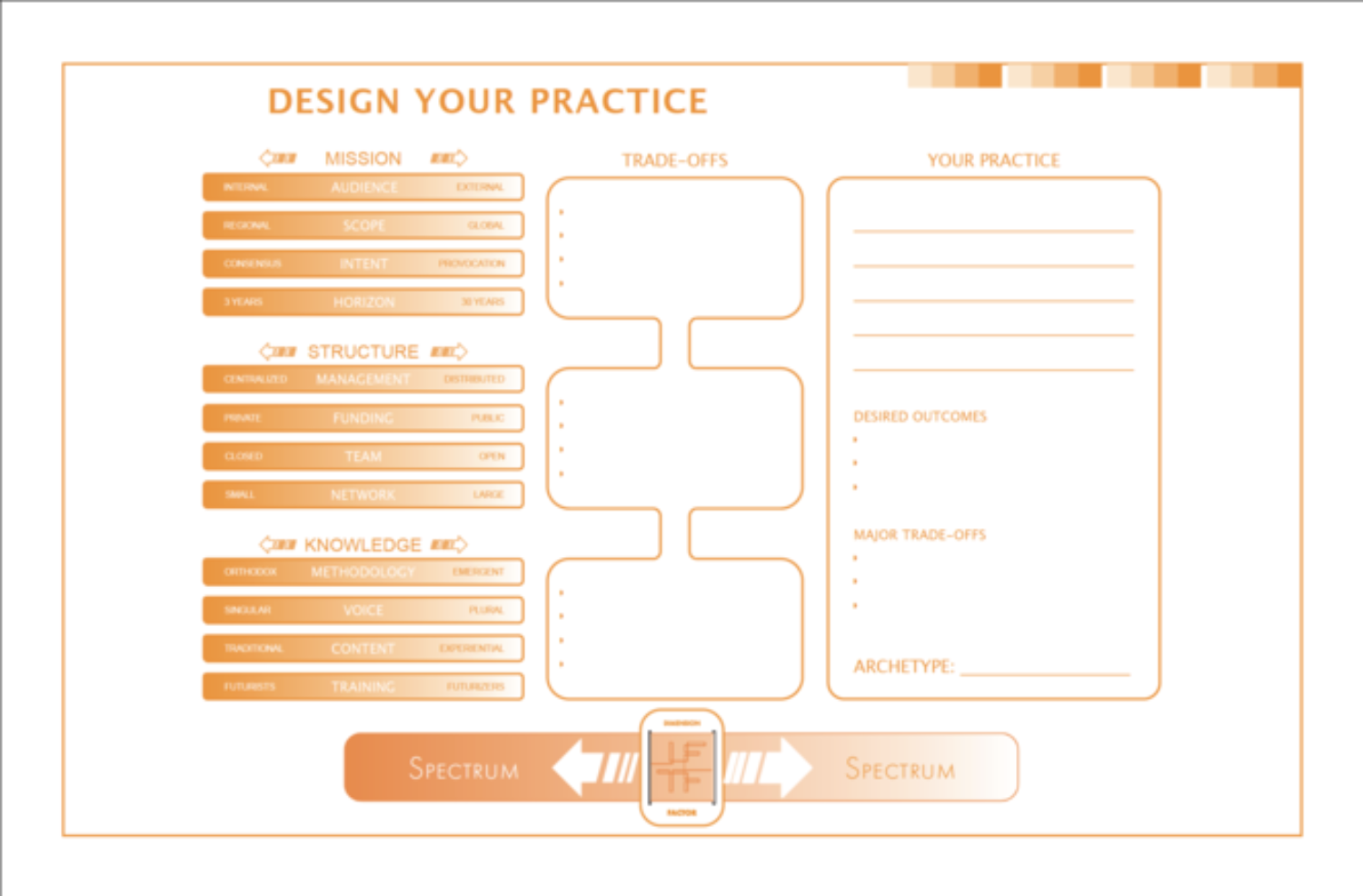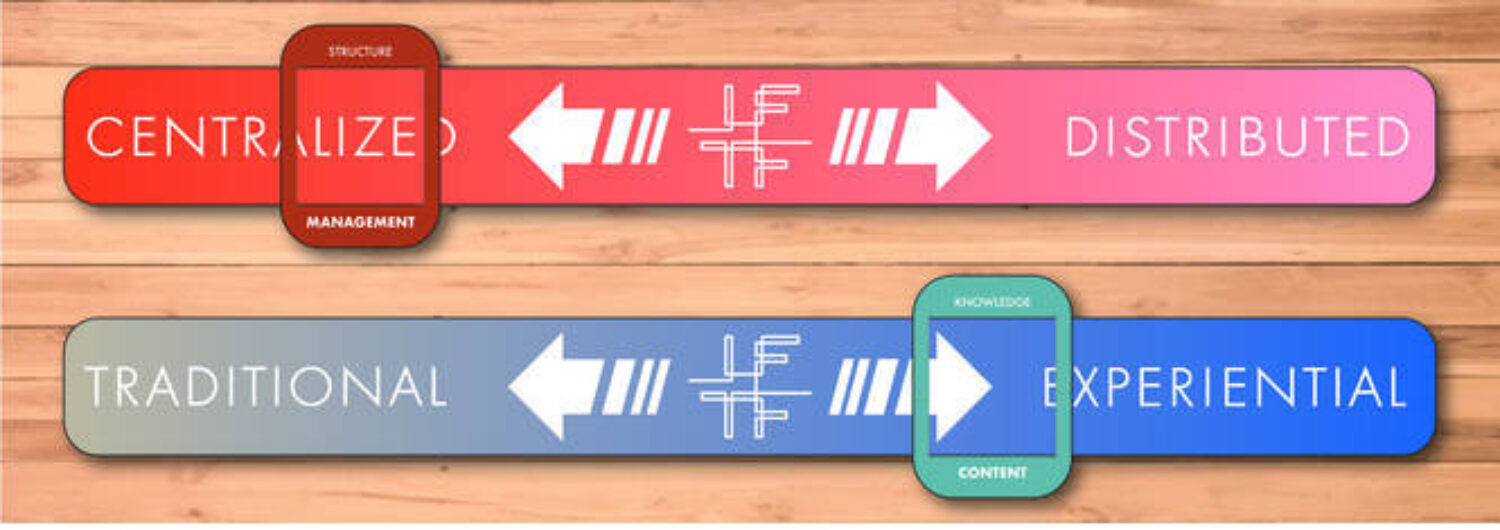As people try to make sense of a world where the present is more volatile than ever, we’ve observed an increased curiosity and interest in strategic futures. But where to begin when thinking about designing a professional practice, from scratch?
IFTF is currently helping one of our partners build an organizational futures practice and create a culture of foresight. To do this, we scanned the landscape of the foresight world; we researched over 250 organizations across multiple sectors: government, corporate, NGO, academic, think tanks, and consultancies. Looking across these groups, we saw a pattern emerge in how they made strategic decisions regarding their internal foresight capacities. The decisions tended to fall into three main categories: Mission (why should we have a foresight practice), Structure (how should we practice foresight), and Knowledge (how should we deliver foresight). Within each of these categories are multiple factors that lie on opposite sides of a spectrum, each with its own set of dynamic trade-offs that impact each other.
It can be difficult to envision how slightly modifying a factor in one category might impact the others, so IFTF designed a slider bar tool and accompanying worksheet to visualize the spectrums along which each decision point exists. As a visual metaphor, we took inspiration from a sound system equalizer, where the settings for each song and recording need to be fine-tuned to get the sound and frequency just right, and you need to constantly rebalance each slider.

Similarly, in designing a foresight practice, decision-making requires consideration of how to equalize and balance each component, or dimension, of organizational development.
For example, is your audience internal, external, or somewhere in between? Will management be centralized or distributed? Is your content delivered in a format that is more traditional, more experiential, or a combination of the two? How does each decision affect the others?
How the tool works

Use this tool to weigh multiple dimensions, and examine how organizational structure will affect outcomes.
- Pick a Slider Bar (i.e. “Audience”): Consider the factors on either side of the slider bar (“Internal or External”). Brainstorm the implications of moving along the spectrum from one end to the other, and evaluate trade-offs that arise with your choice: what are some of the benefits and drawbacks?
- Repeat with each one of the Slider Bars listed.
- As you move through each Slider Bar, re-examine the other bars. Will your decision on “Management” structure affect your desired “Content” delivery method? Shift the arrows on each bar to “equalize” the trade-offs from other dimensions.

Are you planning for a centralized or decentralized management structure? Will your content be traditional or experiential?
- Think about your desired foresight practice. Do the choices you’ve made help you achieve this outcome? What may need to be adjusted or re-balanced?
In practice
We conducted a virtual Expert Workshop with this tool, mailing physical copies of the slider bars and worksheets to participants. IFTF Research Fellow Jacques Barcia, who led the tool’s creation, noted the depth of debate this tool sparked. In particular, it allowed us to uncover the nuances in “Intent”—choosing between provocation or consensus. The concept of a spectrum allowed us to consider creating a consensus-oriented organization while being provocative in content delivery or individual projects.
Why this tool?
This tool can be used in many different settings—from creating a foresight practice from scratch, to evaluating the implications of a decision, pivot, or new product. It can also be paired with other tools in the IFTF Foresight Essentials Toolkit for a deep exploration of possible futures. For example, combine this tool with the “Draw out Consequences” tool to prompt conversation about 2nd and 3rd order consequences along each of the slider bar dimensions.
Now it’s your turn! How would you use this tool? What decisions have you been struggling to make that could be reframed and evaluated through this spectrum tool? Share with us your experience with using this new tool. We hope it yields great foresight!
Want to receive free tips, tools, and advice for your foresight practice from the world's leading futures organization? Subscribe to the IFTF Foresight Essentials newsletter to get monthly updates delivered straight to your inbox.
Ready to become a professional futurist? Learn future-ready skills by enrolling in an IFTF Foresight Essentials training based on 50+ years of time-tested and proven foresight tools and methods today. Learn more ».